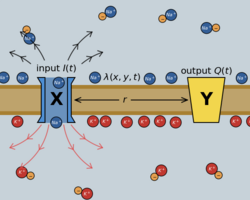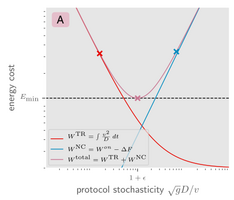Phase behavior in multicomponent mixtures
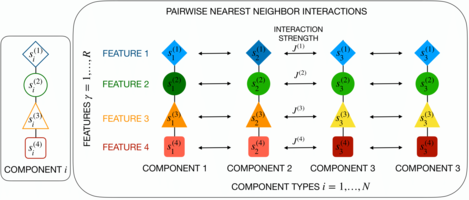 In this project, we aim to better understand the principles governing the phase behavior of mixtures made from arbitrarily many components. Using mathematical modeling, we derive analytic conditions for thermodynamic stability and critical behavior that depend on the correlation structure of the pairwise interactions and allow us to reduce the very high-dimensional space of all components to a potentially much lower-dimensional feature space.
In this project, we aim to better understand the principles governing the phase behavior of mixtures made from arbitrarily many components. Using mathematical modeling, we derive analytic conditions for thermodynamic stability and critical behavior that depend on the correlation structure of the pairwise interactions and allow us to reduce the very high-dimensional space of all components to a potentially much lower-dimensional feature space.
Membrane criticality and lipid homeostasis
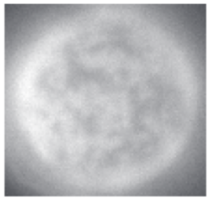 Experiments have demonstrated that cell-derived mammalian plasma membranes are poised close to miscibility critical points. Indeed, the cell regulates the membrane composition in a way to remain close to these special points in phase space when external conditions change. In this project, we examine possible, mechanistic relationships between membrane homeostasis and criticality, first from a conceptual point of view and then comparing to experiments performed in Sarah Veatch’s lab.
Experiments have demonstrated that cell-derived mammalian plasma membranes are poised close to miscibility critical points. Indeed, the cell regulates the membrane composition in a way to remain close to these special points in phase space when external conditions change. In this project, we examine possible, mechanistic relationships between membrane homeostasis and criticality, first from a conceptual point of view and then comparing to experiments performed in Sarah Veatch’s lab.
From local information to global criticality in the inner ear
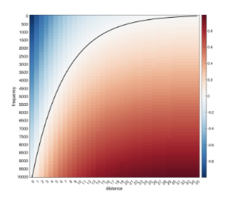
The ear is an exceptional in it sensory capable of detecting vibrations on the order of angstroms. This is possible due to active processes in the inner ear. Models of the inner ear usually focus on active processes at the single hair cell level or passive waves along the cochlea. Our focus is combing these two pictures to create a model where the cochlea as a whole is poised near criticality based on feedback from the local information to which hair cells have access.
Miscibility tricritical points in asymmetric lipid bilayers
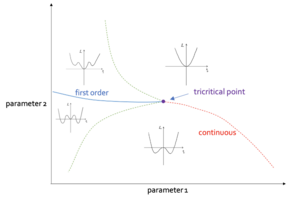
In experiments with model membranes, it was shown that in asymmetric bilayers domain formation in one leaflet may suppress or induce domain formation in the other leaflet, leading to three-phase coexistence. The findings hint that asymmetric membranes exhibit a tricritical point with special thermodynamic properties. Combining Monte-Carlo simulations with a Landau free energy approach, we find a line of tricritical points requiring both a coupling between the leaflets and leaflet asymmetry.
Surface densities in protein and lipid mixtures
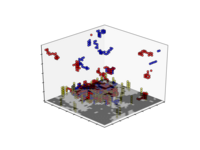
Proteins and lipids both have the propensity to phase separate into coexisting fluid phases, lipids in two-dimensions and proteins in three dimensions. Certain proteins phase separate into near-2D domains on the membranes. We are investigating the physics surrounding these “surface densities”, and in their possible functions in signaling and curvature generation.
Energetic cost of biological signaling
There are many different biological strategies to send information across distances which use fundamentally different mechanisms. Neurons send electrical signals by opening ion channels. Cells send signals within themselves by creating messenger particles which diffuse to their target. We are interested in evaluating the relative energetic cost of these different strategies in the hopes that it explains the diversity of mechanisms.
Energy dissipation for thermodynamic control
We are interested in the energetic dissipation associated with thermodynamically controlling a system in a microscopically reversible manner. This means that we consider control protocols themselves as obeying the laws of thermodynamics. This consideration leads to a novel non-zero lower bound on the energy required to transform a thermodynamic system. We hope to understand how this affects the energy of microscopic biological machines and reversible computing schemes.
Self-tuned criticality in E coli chemoreceptor arrays
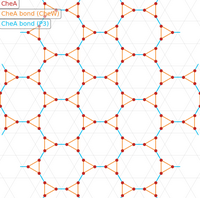
Receptor arrays in E coli detect information about their environment and send it to their motors to modify their behavior. This transduction network displays high levels of cooperativity (gain). We believe they may accomplish this through a self-organized percolation transition which allows them to respond to small changes in input very rapidly.
